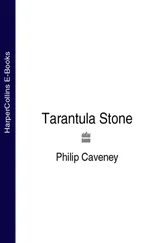As soon as mesocaverns develop an airspace, they become available for colonization by terrestrial cavernicoles. However, cracks and anastomoses are extremely flood-prone, often filling up with water each time there is heavy rainfall at the surface. Vertical cracks probably flush more violently, but remain water-filled for shorter periods than horizontal cracks, and this may result in some differences in their faunas. Less immersion-tolerant organisms may tend to inhabit the wider, better-drained vertical cracks and humid terrestrial cave habitats, while the more aquatic organisms may prefer horizontal cracks or cave pools. It is likely that particulate organic material accumulates at specific points within the cracks (perhaps at the upstream ends of permanently flooded sections), so that some patches of habitat will be better supplied with food than others. Some areas may be too anoxic to support any life other than anaerobic micro-organisms, while some patches may harbour relatively large concentrations of detritivorous invertebrates. As previously discussed, there may be an almost complete overlap in distribution between the ‘terrestrial’ and ‘aquatic’ components of the fauna of such habitats.
The French biospeleologists Juberthie, Delay and Bouillon consider that mesocavernous spaces in fractured rock immediately below the soil constitute a habitat which is separate from caves, which they have termed the ‘Superficial Underground Compartment’ (SUC). Their claim rests on differences between the fauna found here and that found in deep caves. They consider the primary cause of such differences to be the greater temperature variation experienced in the ‘SUC’ compared with the ‘Deep Underground Compartment’ (DUC) represented by deep fissures and caves. While this may be so in SUC habitats beneath shallow soils of regions which experience a strongly seasonal temperate climate, I would doubt that the microclimate in deeply-buried SUC habitats or those of tropical karst differs a great deal from that of the ‘DUC’ – and there is evidence that cave faunas migrate up into the SUC periodically in order to exploit the resources they contain. For the purposes of this classification, I propose therefore to treat the ‘SUC’ as part and parcel of other intermittently-flooding mesocavernous spaces, whether they be immediately below the soil, within cave passages, or connecting one with the other.
There would seem to be little doubt that the SUC within calcareous rocks is by far the most extensive and important of all cave habitats in terms of the numbers and diversity of its biota. Since their ‘discovery’ of the ‘SUC’ (an environment previously well-known to karst hydrologists as the ‘subcutaneous zone’), Juberthie and Delay have gone on to show that this habitat and its biota not only occurs in limestone and other cavernous rocks, but also in ‘non-cavernous’ shales, granites, schist, gneiss, sandstones, etc. My first reaction on reading the paper announcing this discovery was to attack the bottom end of my garden with a pick and shovel. There, to my delight and amazement, I found tiny-eyed cave spiders ( Porrhomma egeria ) frolicking among the fractured chunks of Pennant Sandstone just one metre beneath the wreckage of the flower bed. As far as I know there has been no systematic investigation to date of the fauna of ‘SUC’ habitats in Britain and Ireland – an extraordinary gap in our knowledge which surely must be remedied before long.
A better-known mesocavernous habitat is contained in talus, or scree, whose surface can frequently become covered with vegetation and soil, turning it into a fair imitation of Juberthie and Delay’s SUC. When not sealed by soil, the upper levels of talus are unsuitable as a habitat for cavernicoles, being too cold in winter, too hot in summer and too dry for much of the time. However, if the scree is deep enough, the lower levels must surely provide exactly the conditions favoured by cavernicoles, though I know of no work on this deep-talus habitat in Britain.
I know of only two accessible ‘DUC’ mesocavernous habitats within caves. One is in the spaces within rock piles (underground talus), the other is in speleothem pockets. Rock piles may, or may not provide a suitable habitat for mesocavernicoles. If the pile is in an old, dry ‘fossil’ passage, as most rock piles tend to be, it is unlikely to contain enough food to support life (unless the cave contains bats, or other vertebrates, in which case the rocks may be over-run by guano-beasts). On the other hand, if the pile is sufficiently extensive, and is traversed by percolation water carrying organic material, it is likely to harbour a rich fauna of mesocavernicoles – although the depth within it at which a searching biologist can expect to ‘strike bugs’ will increase with the increasing dryness or breeziness of the surrounding cave atmosphere, precisely as would be the case with above-ground talus. Juberthie (1983) gives an interesting example of a schist-boulder pile in the great Salle de la Verna chamber in France’s Pierre Saint Martin cave. It is inhabited by a typical SUC fauna of Aphaenops beetles which appear to be quite oblivious of the fact that their schist scree habitat lies the best part of 1000 m underground.
Speleothem pockets are essentially just spaces of mesocavernous dimensions like all the others described in this section, but where they occur in the ‘deep cave’ or ‘stagnant air’ zone of caves (see the microclimatesection, later in this chapter), they will often prove to be the very best places to look for mesocavernicoles. Speleothems occur where percolation water, rich in dissolved lime, intersects a cave passage. Where such deposits are laid down over mud, pockets often form between the two; and if deposition is still in progress, trickling water maintains just the microclimate conditions favoured by cavernicoles, while also supplying a source of food. In short, they perfectly reflect conditions in the mesocaverns. The late A. Vandel, in his famous book Biospeologie la biologie des animaux cavernicoles (published in 1964), described such a habitat in the Grotte de Sainte-Catherine, at Balaguères, in the Ariège region of France:
“One side of the chamber is formed by a stalagmitic wall which is covered by a thin layer of water which flows from an opening in the roof … The constant flow brings in organic material from the exterior which nourishes the Collembola and nematoceran Diptera on which Aphaenops (a blind cave beetle) feeds … The stalagmitic covering is separated from the wall by a space of a few millimetres which contains the products of dissolution of the rock: clotted red and black clay, and black magnesium deposits.
When one enters this chamber three or four Aphaenops can usually be seen running on the wall in search of food … If they are caught, others appear. Closer examination soon explains this phenomenon. The calcareous wall is formed of stalagmitic columns arranged parallel to each other. Between these columns small holes have been hollowed and it is into these that Aphaenops disappears … It appears that the space between the rock and the stalagmitic wall constitutes the biotope in which Aphaenops lives when not in search of food, and in which they reproduce.”
Cave pools
Gours, or rimstone pools are formed by seep-fed, lime-rich waters trickling down an incline in an open cave and depositing a sequence of curved, retaining dams. Such pools presumably provide conditions akin to those in phreatic mesocaverns, and often harbour a similar fauna, which is augmented in the cave by animals washed out from seepage cracks during heavy rain. Other drip-fed pools may also contain aquatic mesocavernicoles, providing they receive a food supply.
The concave meniscus of pool surfaces may act as a deadly trap for soil and mesocavernous springtails (see Chapter 5), providing a happy hunting-ground for other specialized mites and springtails, whose feet are equipped to grip.
Читать дальше












